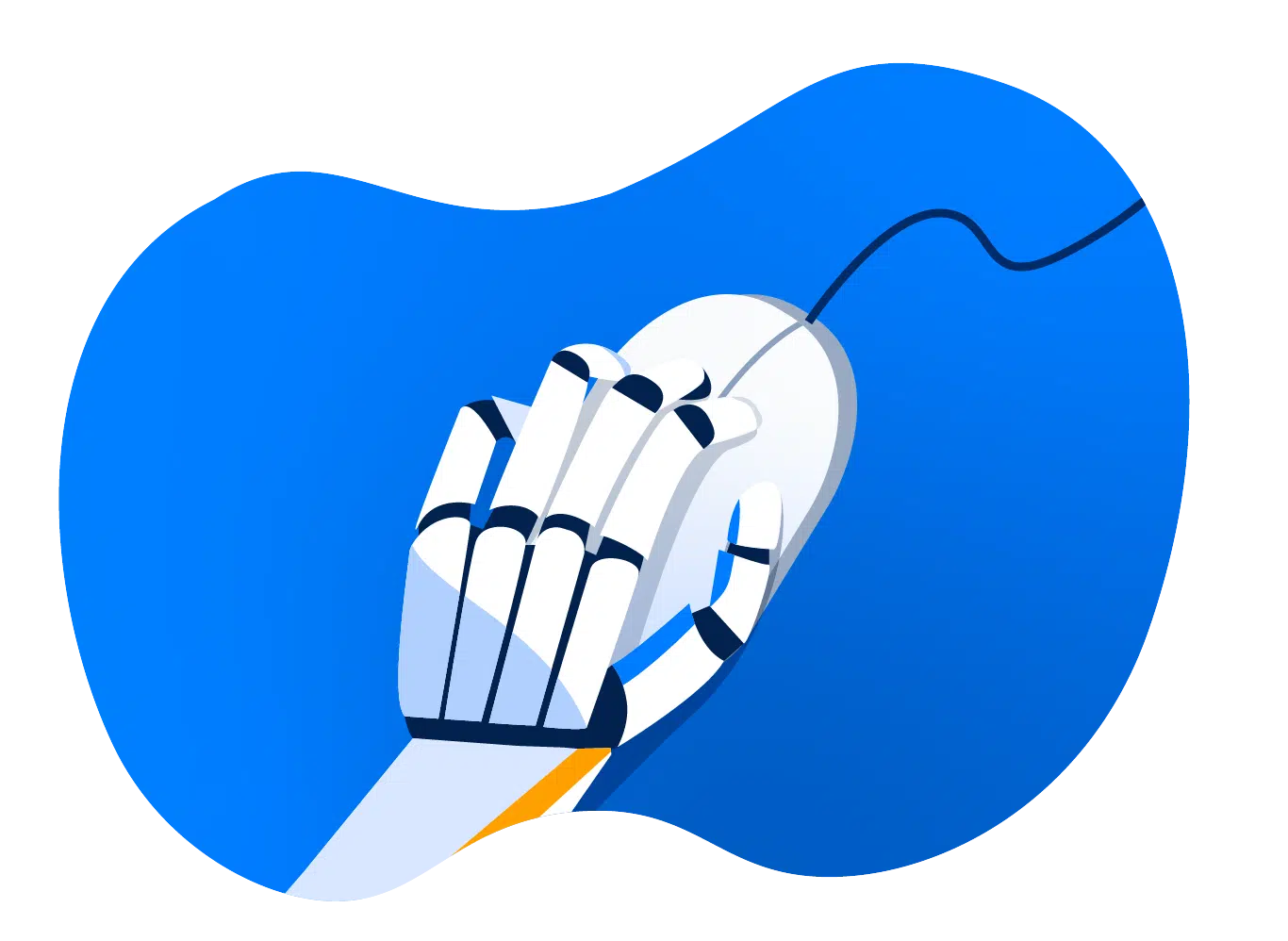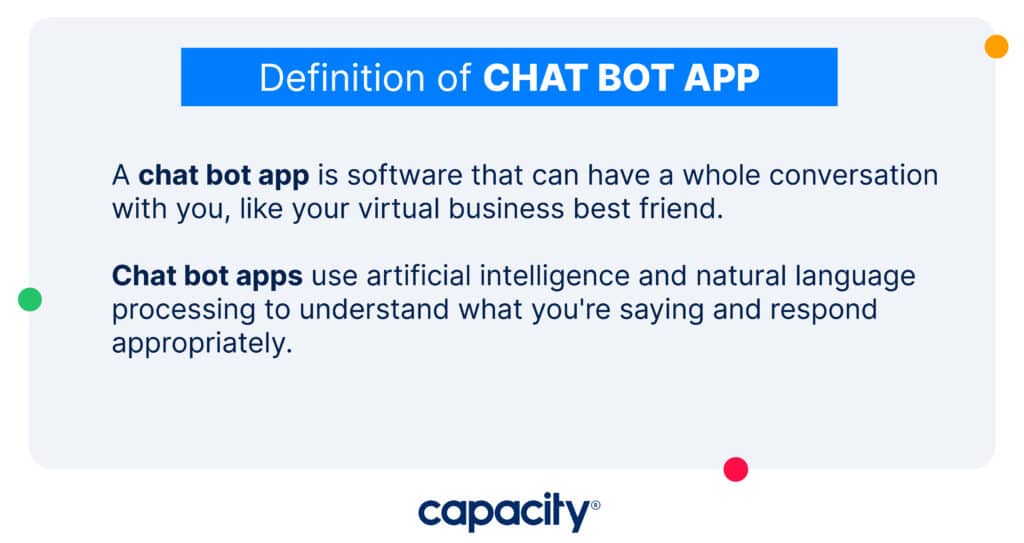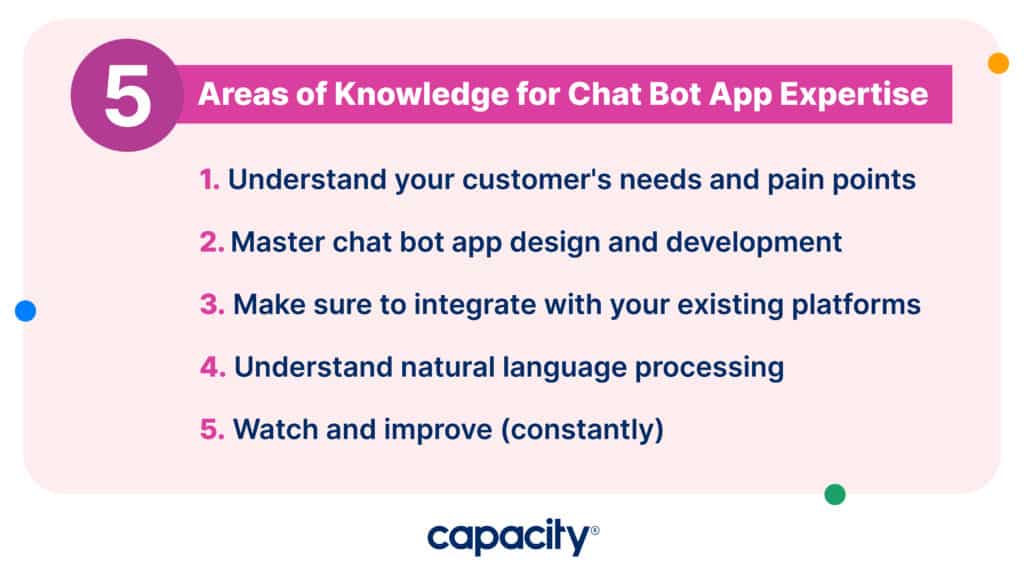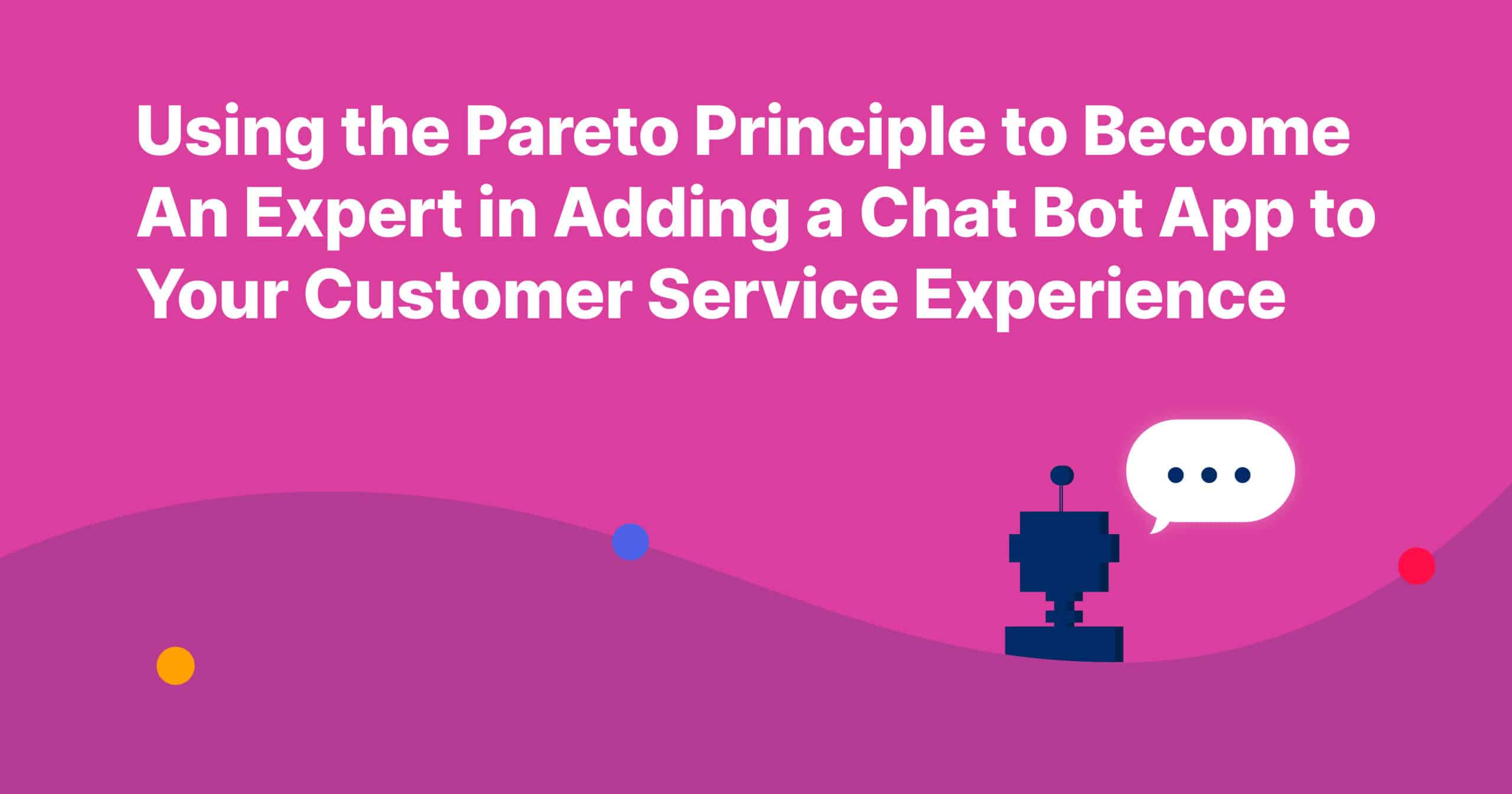Looking to add a chat bot app to your customer service experience but don’t really know where to start? Don’t worry. We’ve got you. Try the Pareto Principle (aka the 80:20 rule) to master the tech and strategy.
The Pareto Principle dates back to the late 19th century when Italian economist Vilfredo Pareto saw that 80% of Italy’s land was owned by 20% of its population. The theory has since been applied to all sorts of situations. In business and customer service, it applies particularly well.
The way it works is simple: 80% of the results you get come from 20% of your efforts. In other words, focusing on a few key activities is more productive rather than spreading yourself too thin and trying to do everything at once.
You don’t need to know everything about the technology to succeed. Instead, hone in on the most important tasks associated with the chat bot app. Think: setting up conversations and managing customer interactions.

Automate Your Work
Capacity’s enterprise AI chatbot can help:
- Answer FAQs anytime, anywhere
- Find relevant documents within seconds
- Give surveys and collect feedback
You’ll become an expert in no time by understanding the basics of how AI and chat bots work and focusing your energy on those few key activities. Plus, you’ll have plenty of energy left to enjoy the other benefits of using a chat bot app, such as boosting customer satisfaction and increasing efficiency.
As we build out your expertise on adding a chat bot app to your customer experience, let’s level-set to understand precisely what we’re talking about.
What is a chat bot app?
A chat bot app is software that can have a whole conversation with you, like your virtual business best friend. It uses artificial intelligence and natural language processing to understand what you’re saying and respond appropriately. You can interact with it through a chat interface on a website, a messaging app (like Slack), or even SMS (like Textel).

There are a ton of different types of chat bot apps, but some of the most common ones you’ll run into are:
- Customer service bots, which help you with basic inquiries or troubleshooting.
- Personal assistant bots, which help you with tasks like scheduling appointments or setting reminders.
Chat bot apps are crazy helpful in customer service. They save your company both time and resources by handling routine tasks and inquiries while letting your agents focus on the more complex issues.
What you need to know to be an expert in chat bot apps for customer service
As I explained above, the Pareto Principle says that about 80% of effects come from 20% of causes. So, in the context of adding a chat bot app to your customer service experience, you can use the principle to ID the most important knowledge areas that’ll bring back the most significant results.

Here are five areas of knowledge that could make up the 20% of information that will give you 80% of the expertise needed to add a chat bot app to your customer experience:
1. Understand your customer’s needs and pain points
Knowing what your customers need and want – and knowing what bugs ’em – helps you decide if a chat bot app is the right solution for your customer service experience in the first place. And then, if you move forward, knowing your customer helps inform your experience so they get the best, most accurate information.
Start by analyzing your customer feedback and reviews. You can find these on your social media page or review sites. Read through the comments, find recurring themes, and ID common pain points or areas for improvement.
Next, add customer surveys and focus groups to your process to gain more in-depth insights. And then, look at data and metrics to glean insight into your customer’s frustrations. For instance, if your agents constantly spend a ton of time answering the same questions over and over (and over), a chat bot app could help handle these inquiries.
2. Master chat bot app design and development
A strong understanding of chat bot design and development principles is necessary to create an experience that is user-friendly and effective.
Learning about chat bot development principles and best practices is one way to start. This involves understanding how to create a chat bot app that’s easy to use, effective, and can actually help your customers.
Make sure your chat bot app is easy to navigate and that you’re using natural language processing to understand and respond to inquiries appropriately. And then, you can incorporate your user feedback to constantly improve performance.
Another important area to focus on is chat bot app testing and optimization. This involves testing the chat bot app’s performance and identifying areas for improvement. Maybe your suggested conversation flows aren’t hitting the nail on the head for your customers. Or maybe answers are taking too long to surface. By testing, you can see exactly what you need to tweak to make sure your chat bot app is helpful.
3. Make sure to integrate with your existing platforms
Connecting your chat bot app and your existing CRM and CCaaS platforms can help prevent customer frustration by streamlining their experience. What’s more, it also ensures that your agents have access to all the customer data they need, so they can provide a more helpful response when required.
To do this, design with APIs allowing easy integration with your existing systems. This can involve webhooks or customer data to enable the most efficient flow possible.
4. Understand natural language processing
To make sure you’re getting the most out of your chat bot app, make sure you understand the tech behind it. Natural language processing is a type of technology that lets computers understand and analyze human language.
When we communicate with each other, we use complex and nuanced language that can be difficult for computers to understand. NLP tries to bridge that gap by using algorithms and machine learning to analyze and interpret human language.
NLP can be used in a variety of applications. For example, when you ask Siri or Alexa a question, they use NLP to understand your question and respond appropriately.
One of the challenges in NLP is understanding the context and meaning of language. For example, the phrase “I like hot dogs” could mean that you enjoy eating hot dogs, or it could be a sarcastic remark about not liking hot dogs (< me). NLP algorithms try to understand the context and tone of language to provide more accurate responses.
5. Watch and improve (constantly)
Watching performance and making changes based on customer feedback is crucial to ongoing success.
Start by tracking metrics like customer satisfaction, response time, and return visits. This helps you gauge the effectiveness of your chat bot app and determine where you can make improvements.
You should also be collecting customer feedback, both positive and negative. If a user has something to say about their experience, listen to it! This can help you hone in on areas for improvement and make any necessary tweaks.
By focusing on these areas of knowledge, you can develop the expertise needed to successfully add a chat bot app to your customer experience.
Ready to get started? Try Capacity for free!














































